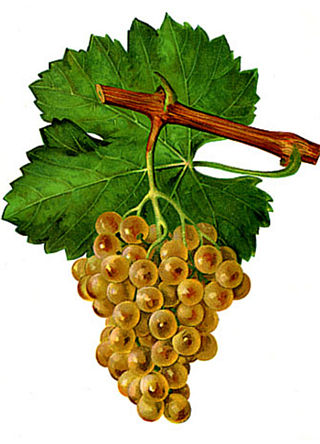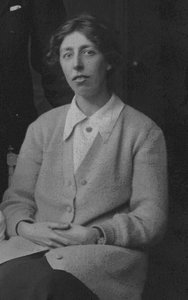
The wine region within the historical province of Champagne in the northeast of France is best known for the production of champagne, the sparkling white wine that bears the region's name. EU law and the laws of most countries reserve the term "champagne" exclusively for wines that come from this region located about 160 kilometres (100 miles) east of Paris. The viticultural boundaries of Champagne are legally defined and split into five wine-producing districts within the historical province: Aube, Côte des Blancs, Côte de Sézanne, Montagne de Reims, and Vallée de la Marne. The city of Reims and the town of Épernay are the commercial centers of the area. Reims is famous for its cathedral, the venue of the coronation of the French kings and a UNESCO World Heritage Site.

A vineyard is a plantation of grape-bearing vines, grown mainly for winemaking, but also raisins, table grapes, and non-alcoholic grape juice. The science, practice and study of vineyard production is known as viticulture. Vineyards are often characterised by their terroir, a French term loosely translating as "a sense of place" that refers to the specific geographical and geological characteristics of grapevine plantations, which may be imparted to the wine itself.

Chasselas or Chasselas blanc is a wine grape variety grown mainly in Switzerland, France, Germany, Portugal, Hungary, Romania, New Zealand, Croatia and Chile. Chasselas is mostly vinified to be a full, dry and fruity white wine. It is also suitable as a table grape, grown widely for this purpose in Turkey and Hungary.

Sémillon is a golden-skinned grape used to make dry and sweet white wines, mostly in France and Australia. Its thin skin and susceptibility to botrytis make it dominate the sweet wine region Sauternes AOC and Barsac AOC.

St Winifred's School was a school for girls in Llanfairfechan, Conwy County Borough, Wales.

New Zealand wine is produced in several of its distinct winegrowing regions. As an island country in the South Pacific Ocean, New Zealand has a largely maritime climate, although its elongated geography produces considerable regional variation from north to south. Like many other New World wines, New Zealand wine is usually produced and labelled as single varietal wines, or if blended, winemakers list the varietal components on the label. New Zealand is best known for its Marlborough Sauvignon Blanc, and more recently its dense, concentrated Pinot Noir from Marlborough, Martinborough and Central Otago.

Hugh Eric Allan Johnson is an English journalist, author, editor, and expert on wine. He is considered the world's best-selling wine writer. A wine he tasted in 1964, a 1540 Steinwein from the German vineyard Würzburger Stein, is considered one of the oldest to have ever been tasted.

Marjory Stephenson was a British biochemist. In 1945, she was one of the first two women elected a Fellow of the Royal Society, the other being Kathleen Lonsdale.

The United Kingdom is a major consumer of wine, although a minor grower and producer. Wine production in the UK has historically been perceived as less than ideal due to the cold climate, but warmer summers and grapes adapted to these conditions have played a role in increasing investment and sale of wines. Most is English sparkling wine, from vineyards across Southern England and sparkling wine from Wales where the climate is warmer than that of northern areas. Vineyards are becoming more commonplace in counties such as Essex, Sussex and Kent, where more varieties of wine can be produced due to the drier and warmer climate.

Harold Olmo was an American viticulturist and professor at the University of California, Davis where he created many new grape varieties known today as Olmo grapes. In the 1950s, he helped to establish California's first quarantine facility on the UC Davis campus to permit California growers to import foreign vines. This led to an expansion of California's wine industry as more Vitis vinifera was introduced to the area.
Dawnine Sample Dyer is an American winemaker and entrepreneur who pioneered the use of champagne-making methods in California's fledgling sparkling wine industry in the 1970s.

Champagne Salon is a small producer of Champagne made in the blanc de blancs style. Salon, along with Delamotte, is part of the Laurent-Perrier group since 1989.

Gaja is an Italian wine producer from the Piemonte region in the district of Langhe, chiefly producing a number of Barbaresco and Barolo wines, and later diversified into Brunello di Montalcino and "Super Tuscan" production. Its current owner and president Angelo Gaja is credited with developing techniques that have revolutionised winemaking in Italy, and terms such as "the undisputed king of Barbaresco", and "the man who dragged Piedmont into the modern world" have been applied to him, and whose Barbaresco wine is considered a status symbol on a par with Château Lafite Rothschild or Champagne Krug.
Domaine Armand Rousseau is a French wine grower and producer. It is based in Gevrey-Chambertin, in the Côte de Nuits wine-growing region of Burgundy, France.

Boushey Vineyard is a grape-growing estate located in the Yakima Valley AVA, north of Grandview, Washington. Grapes grown in the vineyard have been used to produce some of the most critically acclaimed Washington wines with the name Boushey regularly being featured on vineyard designated wines. Paul Gregutt, wine writer for the Seattle Times and Wine Enthusiast, list Boushey as one of the "top ten" vineyards in the entire state. The vineyard is owned and managed by viticulturist Dick Boushey who was honored in 2002 by the Washington State Wine Commission as Washington's "Grower of the Year" and in 2007 by Wine & Spirits as their "Grower of the Year". After Red Willow Vineyard, which was planted with David Lake and Mike Sauer, Boushey was one of the first Washington wine growers to plant Syrah. Today, Boushey Vineyard is considered by wine experts such as Jon Bonné to be "One of the state's top Syrah spots" with many Washington Syrahs made from Boushey's grape receiving critical acclaim.

The Okanagan Valley wine region, located within the region of the same name in the British Columbia Interior, is Canada's second-largest wine producing area. Along with the nearby Similkameen Valley, the approximately 8,619 acres of vineyards planted in the Okanagan account for more than 80% of all wine produced in British Columbia, and are second in economic importance for wine production to the Niagara Peninsula of Ontario. Some 182 licensed wineries existed from south to north in the valley in 2018, with many situated along the 135 km (84 mi)-long Okanagan Lake and its tributaries and downstream lakes, including Skaha Lake, Vaseux Lake, and Osoyoos Lake. The Okanagan has diverse terrain that features many different microclimates and vineyard soil types, contributing characteristics which are part of an Okanagan terroir.

Muriel Wheldale Onslow was a British biochemist, born in Birmingham, England. She studied the inheritance of flower colour in the common snapdragon Antirrhinum and the biochemistry of anthocyanin pigment molecules. She attended the King Edward VI High School in Birmingham and then matriculated at Newnham College, Cambridge in 1900. At Cambridge she majored in botany. Onslow later worked within Bateson's genetic group and then Frederick Gowland Hopkins biochemical group in Cambridge, providing her with expertise in biochemical genetics for investigating the inheritance and biosynthesis of petal colour in Antirrhinum. She was one of the first women appointed as a lecturer at Cambridge, after moving to the Biochemistry department.

Tempranillo blanco is a white Spanish wine grape variety that is grown in the Rioja Denominación de Origen (DOC). It is a mutation of the red Tempranillo grape variety that is planted in Rioja. The white grape variety was discovered in a Tempranillo vineyard in the Rioja region by a wine grower in the late 20th century. In 2007, the Consejo Regulador of Rioja officially sanctioned the use of Tempranillo blanco in the DOC wines of Rioja.

Sussex wine is wine produced in the historic county of Sussex in southern England, a region divided for administrative purposes into East Sussex and West Sussex. In 2022, Sussex wine gained Protected Designation of Origin status in the European Union's Geographic Indication scheme. This followed the granting of protected regional status by the Department for Environment, Food and Rural Affairs (DEFRA) in 2016.
Olive Muriel Cook, was an English writer and artist who published county guides, as well as writing various books accompanied by the work of her husband, the photographer Edwin Smith.